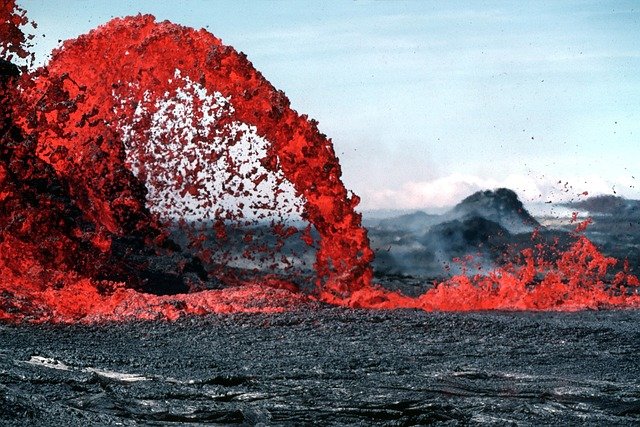Uncovering the Secrets of Volcano Tourism: A Rising Travel Trend
The ground trembles beneath your feet, and a faint smell of sulfur fills the air. In the distance, a plume of smoke rises from an imposing mountain, its peak shrouded in mystery. This is the world of volcano tourism, an emerging travel niche that's captivating adventurers and geologists alike. As more travelers seek unique experiences, the allure of these geological wonders is drawing visitors from around the globe.

In the modern era, volcano tourism began to take shape in the mid-20th century. Hawaii’s volcanoes, particularly Kilauea, became popular destinations for tourists eager to witness the raw power of nature. The establishment of Hawaii Volcanoes National Park in 1916 paved the way for organized volcano visits, setting a precedent for similar initiatives worldwide.
The Appeal of the Inferno: Why Travelers Are Drawn to Volcanoes
What drives people to seek out these potentially dangerous landscapes? The answer lies in a combination of factors. For many, it’s the thrill of witnessing Earth’s raw power firsthand. The sight of molten lava, the sound of bubbling mud pots, and the feel of warm volcanic soil underfoot create an immersive, multisensory experience unlike any other.
Moreover, volcanoes offer a unique window into the planet’s geological processes. For those interested in earth sciences, a volcano tour can be an educational adventure, providing insights into plate tectonics, rock formation, and the Earth’s internal structure.
Destinations on Fire: Popular Volcano Tourism Hotspots
While active volcanoes can be found on every continent, some destinations have emerged as particularly popular for volcano tourism. Iceland, with its dramatic landscape of fire and ice, has seen a boom in visitors eager to explore its volcanic terrain. The country’s easily accessible volcanoes, such as Eyjafjallajökull and Fagradalsfjall, offer spectacular hiking opportunities and the chance to see fresh lava flows.
In Indonesia, Mount Bromo in East Java provides a surreal landscape that’s become a photographer’s paradise. Visitors can watch the sunrise over the volcano’s caldera, surrounded by a sea of clouds. Meanwhile, Sicily’s Mount Etna, Europe’s most active volcano, offers year-round attractions, including winter skiing on volcanic slopes and summer hikes to smoking craters.
Safety First: Navigating the Risks of Volcano Tourism
While the allure of volcanoes is undeniable, it’s crucial to address the inherent risks. Volcanic activity can be unpredictable, and sudden eruptions pose serious dangers to visitors. Responsible volcano tourism relies heavily on expert monitoring and strict safety protocols.
Many popular volcanic sites employ teams of volcanologists who constantly monitor seismic activity, gas emissions, and other indicators of potential eruptions. Tour operators work closely with these experts to ensure visitor safety, often implementing real-time alert systems and evacuation procedures.
Travelers interested in volcano tourism should always book with reputable tour companies, follow all safety guidelines, and stay informed about current volcanic activity in their chosen destination. It’s also essential to have appropriate gear, including sturdy hiking boots, protective eyewear, and respiratory masks for areas with high sulfur emissions.
The Impact of Volcano Tourism on Local Communities
The rise of volcano tourism has had significant effects on the communities living in the shadow of these geological giants. In many cases, it has brought economic opportunities to remote areas, creating jobs in tourism, hospitality, and related industries.
However, the influx of visitors also presents challenges. Increased foot traffic can lead to environmental degradation, while the unpredictable nature of volcanic activity can result in sudden drops in tourism, affecting local livelihoods. Successful volcano tourism destinations often strike a balance between economic development and environmental conservation, involving local communities in decision-making processes and benefit-sharing.
Lava-Hot Tips for Aspiring Volcano Tourists
-
Research your destination thoroughly, including recent volcanic activity and safety records
-
Invest in proper gear: heat-resistant boots, protective eyewear, and breathable, long-sleeved clothing
-
Always hire a certified guide or join an official tour group
-
Be prepared for sudden changes in weather and volcanic activity
-
Respect local customs and beliefs surrounding the volcano
-
Consider purchasing travel insurance that covers volcano-related incidents
-
Stay hydrated and protect yourself from the sun, as volcanic landscapes often lack shade
-
Bring a camera with a protective case to shield it from volcanic dust and gases
The Future of Volcano Tourism: A Balancing Act
As volcano tourism continues to grow, the industry faces the challenge of balancing visitor demand with conservation efforts and safety concerns. Advances in monitoring technology and predictive models are making it easier to forecast volcanic activity, potentially allowing for safer and more accessible volcano experiences.
Looking ahead, the future of volcano tourism may lie in sustainable practices that minimize environmental impact while maximizing educational value. Virtual reality experiences and live streaming of volcanic activity could provide alternatives for those unable to visit in person, while also reducing the physical footprint on these fragile ecosystems.
Volcano tourism represents a unique intersection of adventure, science, and cultural experience. As travelers continue to seek out these fiery wonders, the industry will need to evolve, ensuring that the thrill of standing at the edge of Earth’s geological marvels remains both safe and sustainable for generations to come.





